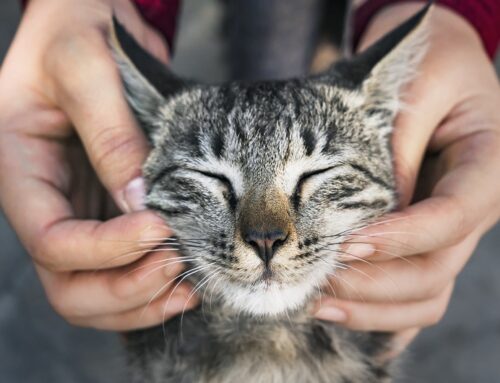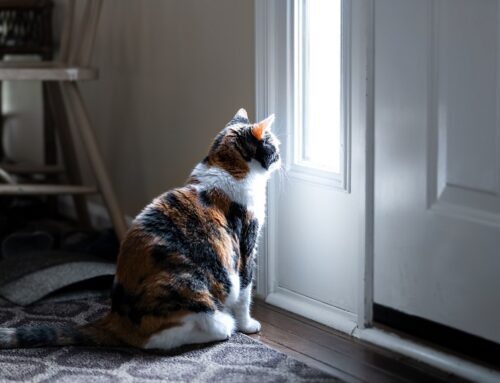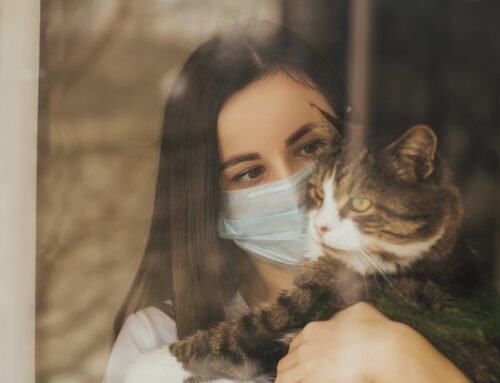Why should I vaccinate my cat? Vaccines for cats were developed to protect your pets and your family from contagious, deadly diseases. This is especially true of the rabies virus, which can be transmitted to humans from cats, dogs, bats, and a few other mammals.
What vaccines are recommended for my cat? The American Association of Feline Practitioners (AAFP) recommends that ALL cats receive the rabies and FVRCP vaccines. This is because these diseases are highly contagious and often fatal, and as previously noted, the rabies virus can infect humans. Depending on your cat’s lifestyle, a feline leukemia vaccine may also be recommended.
Why is it important to vaccinate against rabies? Rabies infections are ALWAYS fatal. Rabies is transmitted through the saliva of animal bites, especially from dogs, raccoons, skunks, bats, cats, and a variety of other mammals. After a cat is exposed to rabies, symptoms often begin showing in about 2 months (but can be a lot shorter or longer in some cases.) The most common symptom is aggressive behavior, but weakness and confusion are also possible. Death is always the end result. Missoula requires rabies vaccines for all cats, dogs, and ferrets. Although it is rare, rabies quarantines do happen in Missoula County, even as recently as January 2020.
What is the FVRCP vaccine? FVRCP is a combined vaccine that protects against Feline Viral Rhinotracheitis, Calicivirus, and Panleukopenia. These viruses are highly contagious among cats:
- Feline Viral Rhinotracheitis (FVR) is also called “feline herpes.” It can be a lifelong illness in cats with major symptoms of severe upper respiratory infection, runny nose, sneezing, and conjunctivitis. It is spread in cat saliva and eye & nasal discharge, and the virus can live in the environment for up to 24 hours.
- Feline Calicivirus (FCV) also causes an upper respiratory infection with additional symptoms of mouth and tongue ulcers. More severe strains of the virus can cause skin lesions, yellowing of the skin, and death. It is spread in cat saliva, eye & nasal discharge, and through sneezing; and the virus can live in the environment for up to 30 days.
- Feline Panleukopenia (FPV) is also called “feline parvo.” It is extremely contagious and often fatal, especially among kittens. Common symptoms are lethargy, vomiting, diarrhea, and fever. FPV also attacks a cat’s immune system, making them susceptible to other opportunistic infections. It is spread in cat urine, feces, and nasal discharge; and the virus can live in the environment for up to a year.
Why should I consider a Feline Leukemia vaccine? The Feline Leukemia Virus (FeLV) is found worldwide in domestic cats, and the vaccine should strongly be considered for cats that spend any unsupervised time outdoors. The virus targets the immune system in cats; and it eventually progresses into disorders such as lymphoma (cancer), anemia, oral inflammatory disease, and other opportunistic infections. It is spread via close contact with any bodily fluids of an infected cat (from fighting, mutual grooming, sharing beds, etc.), but the virus can only live in the environment for a few minutes.
When should my cat get vaccinated? Each vaccine has its own recommended schedule:
- The rabies vaccine should be administered to kittens at 12 weeks of age. A rabies booster must be given 1 year later, with subsequent boosters given every 3 years after that.
- The FVRCP vaccine should be given to kittens at 6-8 weeks of age. FVRCP boosters must be given every 3-4 weeks until the kitten is 16-20 weeks of age. An additional booster is necessary 1 year later, with subsequent boosters given every 3 years after that. Cats in high-risk environments my need more frequent boosters.
- The Feline Leukemia vaccine, if it is recommended, should be given to kittens at 12 weeks of age. An FeLV booster must be given 3-4 weeks later, and annual boosters must be administered every year afterward. Cats with very limited outdoor access may do well with only a booster every other year.








